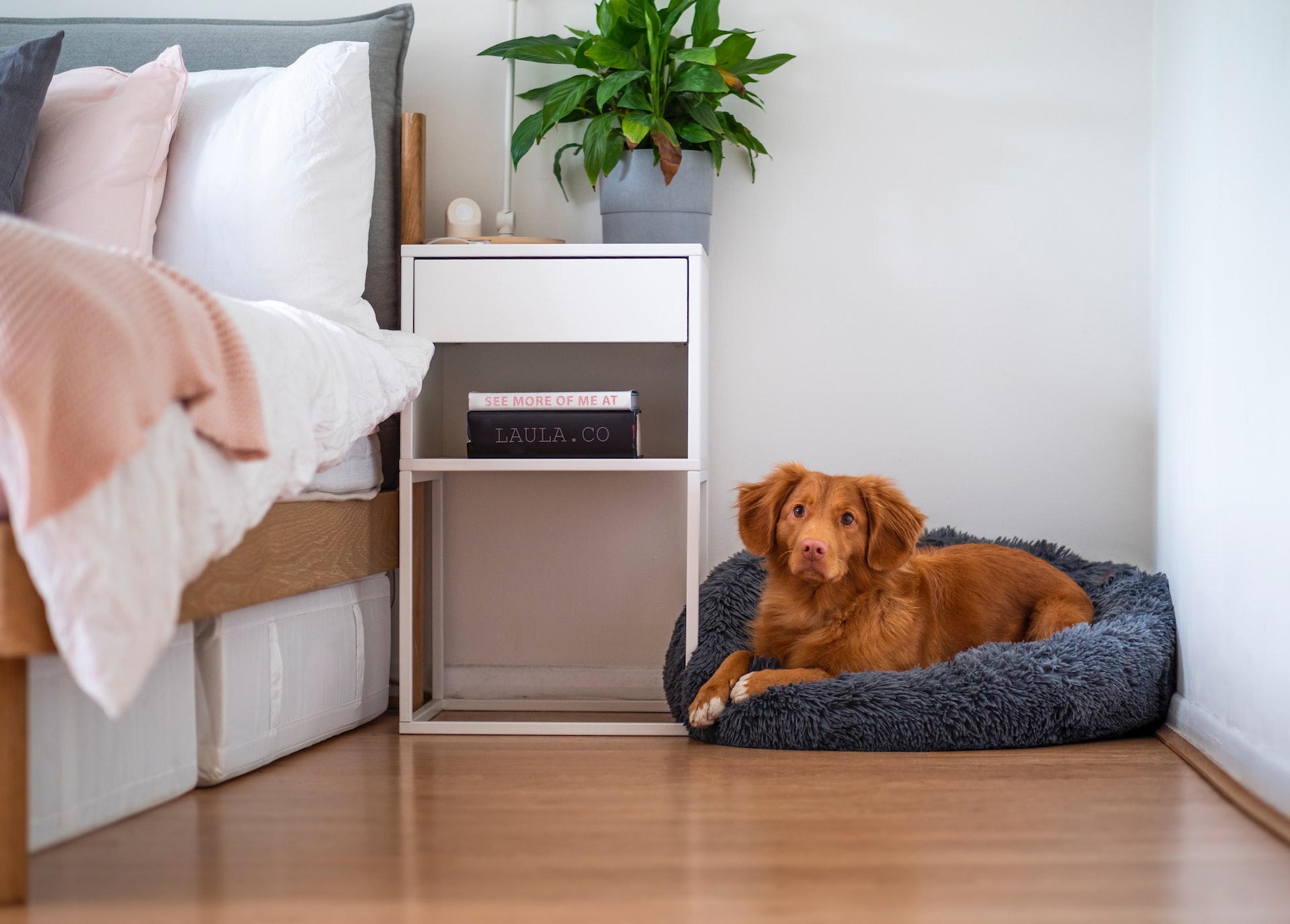As a pet parent, you want to give your pup the best of everything. That includes finding the perfect bed for them to get their much-needed rest. With so many options available, it can be hard to know where to start. But don’t worry, we’ve got you covered!
In this blog, we’ll discuss what to consider when choosing a bed for your dog, the benefits of a good dog bed, the different types of dog beds, sizing for dog beds, choosing the right material for your dog bed, understanding your dog’s sleeping habits, considerations for dogs with allergies, and cleaning and maintenance tips for dog beds.
What to consider when choosing a bed for your dog
When selecting the right bed for your pup, there are a few factors to consider. First and foremost, you want a bed that’s comfortable and supportive. You want to ensure that your pup has enough room to move around in their bed without feeling cramped. I know that you’ll find many factors to consider in this article, but if you want to choose a simple yet high-quality product, you can simply opt for Kentucky dogwear when choosing the best bed for your dog.
You should also consider the material of the bed, as different materials can provide different levels of comfort. Additionally, you should think about the size of the bed and whether it’s suitable for your dog’s size and shape. Finally, you should think about the cost of the bed, as beds can range in price from a few dollars to hundreds.
When it comes to beds for your pup, comfort is key. That’s why it’s important to consider the type of filling used in the bed. Memory foam, for example, is a popular option as it provides extra cushioning and support.
Other popular fillings include polyester fibers, cotton, and foam chips. It’s also important to consider the design of the bed. If your pup is an active sleeper, you may want to consider a bed with bolsters or raised sides to give them something to curl up against. If your pup is a senior, a bed with lower sides may be more comfortable.
When it comes to size, it’s important to think about your pup’s size, shape, and sleeping style. If they’re an active sleeper, you may want to size up to give them plenty of room to move. If your pup is a senior, you may want to size down so they don’t have to climb over the sides of their bed. And if your pup is a cuddler, you may want to size up so they have plenty of room to snuggle up.
You also want to make sure you’re getting the best value for your money. Prices for beds can range from a few dollars to hundreds. If you’re on a budget, there are plenty of affordable options available. However, if you’re looking for something more luxurious, you may have to shell out a bit more money.
Benefits of a good dog bed
A good bed can provide a number of benefits for your pup. First and foremost, it can provide a comfortable place for them to relax and get some much-needed rest. A supportive bed can also help to reduce joint pain and improve circulation. Additionally, a comfortable bed can help to reduce stress and anxiety. It can also give your pup a sense of security and help to reduce separation anxiety.
A good bed can also help to protect your furniture and flooring. If your pup has a designated spot to sleep, they’ll be less likely to jump on the furniture or scratch up your floors. Finally, a good bed can help to keep your pup warm during cold winter months.
Types of dog beds
When it comes to choosing the right bed for your pup, there are a number of different types to choose from. The most common type is a traditional mattress-style bed. These beds come in a variety of sizes and materials and are a great option for most pups.
Other popular types of beds include orthopedic beds, heated beds, and elevated beds. Orthopedic beds provide extra cushioning and support for older pups, while heated beds can keep your pup warm in the winter. Elevated beds are a great option for hot climates, as they provide extra ventilation.
In addition to the traditional types of beds, there are also a number of more unique beds available. Donut beds, for example, are round beds with high sides to give your pup a sense of security. Bean bag beds are filled with soft foam beads that provide extra cushioning and support. Finally, cuddler beds are designed to give your pup plenty of room to snuggle up.
Sizing for dog beds
When it comes to sizing for dog beds, it’s important to consider your pup’s size, shape, and sleeping style. If your pup is an active sleeper, you may want to size up to give them plenty of room to move. If your pup is a senior, you may want to size down so they don’t have to climb over the sides of their bed. And if your pup is a cuddler, you may want to size up so they have plenty of room to snuggle up.
When selecting the right size for your pup, it’s important to consider the dimensions of the bed. You want to make sure that your pup has enough room to stretch out and move around. If the bed is too small, your pup may feel cramped. On the other hand, if the bed is too big, your pup may not feel secure.
Choosing the right material for your dog bed
The material of your dog bed is important, as it can affect the comfort level of your pup. Memory foam is a popular option as it provides extra cushioning and support. Other popular materials include polyester fibers, cotton, and foam chips. Each material has different benefits, so it’s important to do your research and choose the one that’s right for your pup.
If you’re looking for a more luxurious option, you may want to consider a leather bed. Leather beds are durable and provide an extra layer of comfort and support. They’re also easy to clean and maintain. If your pup is a chewer, however, leather may not be the best option, as it can be easily damaged.
Understanding your dog’s sleeping habits
It’s also important to consider your pup’s sleeping habits when selecting the right bed. If your pup is an active sleeper, you may want to consider a bed with bolsters or raised sides to give them something to curl up against. If your pup is a senior, a bed with lower sides may be more comfortable. Additionally, if your pup is a cuddler, you may want to consider a bed with plenty of room for them to snuggle up.
Considerations for dogs with allergies
If your pup has allergies, you may want to consider an allergen-free bed. These beds are made from materials that are hypoallergenic and free from chemicals that can trigger allergic reactions. Additionally, allergen-free beds are usually easy to clean and maintain.
Cleaning and maintenance tips for dog beds
It’s important to keep your pup’s bed clean to ensure that they’re getting the best rest possible. Most beds can be spot-cleaned with a mild detergent and a damp cloth. If your pup’s bed is made of a washable material, you can also machine-wash it on a gentle cycle. Additionally, you should vacuum the bed regularly to remove any dirt and debris.
Finally, you should inspect your pup’s bed regularly to ensure that it’s in good condition. If you notice any rips, tears, or loose seams, it’s time to replace the bed.
Conclusion
Choosing the right bed for your pup can be a difficult task. That’s why it’s important to consider a number of factors, such as the type of filling, design, size, and material. Additionally, you should consider your pup’s sleeping habits and any allergies they may have. Finally, it’s important to keep your pup’s bed clean and inspect it regularly for any signs of wear and tear. With these tips in mind, you’ll be sure to find the perfect bed for your pup!


